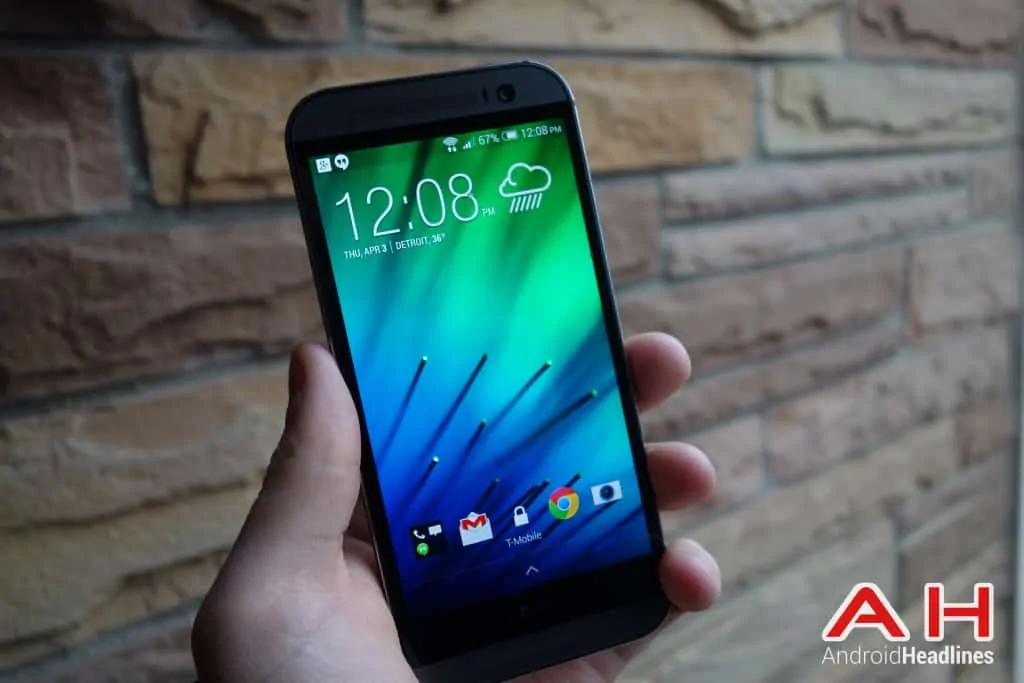Introduction
Do we have a good one for you today – the HTC One M8 goes up against its replacement, the HTC One M9. Some of you are going to say this is an unfair comparison because the One M8 is about a year old now…we know that. But for those of you current One M8 owners, thinking of upgrading or potential HTC customers that are saying to themselves, “The HTC One M9 looks almost like last year’s model,” this is a chance for them to see, side-by-side, the upgrades that were made.
Not surprisingly, both devices sport many of the same features – both use the same 5-inch FHD display, both use a Qualcomm Snapdragon processor, although a much different model, both offer a 32GB model and both offer a microSD card slot to expand that memory. Both devices are packing the dual, front-facing stereo speakers with HTC’s excellent BoomSound. The HTC One M8 and One M9 also offer an IR Blaster and a stereo FM radio, a dedicated microphone for noise cancellation as well as Qualcomm’s Quick Charge, dual-band Wi-Fi, Bluetooth, GPS, NFC and a microUSB port for charging and data transfer.
Please take a look at the detailed specifications comparison found below – expand it by clicking on the “View Full Comparison” at the bottom and you will get a real sense of how these two devices match up against one another. After that, we will look at each individual device, talk about it, and weigh out some of the pros and cons in an effort to pick a winner for this comparison.
HTC One M8

The design of the HTC One M8 cannot be mistaken for any other manufacturer – HTC stunned the world with 2013’s One M7 and it’s all aluminum body and carried forward the same design and materials with subtle refinements on the One M8. The One M8 had a tendency to be slippery, so this year HTC gave it a slightly different finish – which helped, but they needed to go a little bit further…and did with the One M9.
The display is a 5-inch Full HD (FHD) display with a resolution of 1920 x 1080 pixels and 441 pixels-per-inch (PPI) – the same display that is on the new HTC One M9. A Qualcomm Snapdragon 32-bit 801 quad-core processor clocked at 2.3GHz powers the device along with 2GB of RAM (3GB on the One M9) and either 16GB/32GB of internal storage. Both devices offer a microSD card slot to expand the memory up to 128GB.
The camera on the One M8 was a real mystery when leaked images first appeared, making it look like the One M8 had two cameras, rather than one – it did and it didn’t. It retained the same, strange, 4MP main camera using UltraPixels – larger than normal pixels so it only needed four of them, just like the year before with the One M7. On the One M8 they added a Duo Camera – a duplicate camera, but its purpose was for special effects, specifically the depth of field. It was met with a ‘meh’ attitude and treated as more of a gimmick than a real upgrade, as software could do the same effects. HTC added a large – for its time – 5MP front-facing camera for selfies and video chatting…a trend that is becoming the norm with the new devices coming out in 2015.
As far as other features go, both have non-removable batteries with the HTC One M8 checking in at only 2600mAh versus the larger 2840mAh in the newer One M9 – but both devices also can use Qualcomm’s Quick Charge feature…a 60-percent charge in only 30 minutes. We pointed out earlier that both devices feature the BoomSound speakers, FM radio, built-in IR Blaster, Wi-Fi, Bluetooth (4.0 in One M8 and 4.1 in One M9), a dedicated microphone for noise cancellation and a microUSB port for charging and data transfer. The One M8 comes in Gunmetal Gray, Glacial Silver and Amber Gold. It has been upgraded to Android 5.0 Lollipop and sells for $199 on a two-year contract, although most places have reduced it to $0, and it remains about $500 off-contract.
HTC One M9

The new HTC One M9 carries its lineage forward with basically the same look, although the metal was reworked on the sides to add a little grip – something that was greatly needed. The all-aluminum design is still very beautiful although to some, it is getting a bit stale after seeing it for three years in a row. The back looks different due to the camera redesign, but the front is almost identical.
The HTC One M9 sports the same 5-inch Full HD Super LCD3 display with a resolution of 1920 x 1080 pixels and 441 PPI found on the One M8. The One M9 pulls away from the One M8 with its use of a 64-bit octa-core Qualcomm Snapdragon 810 processor with four cores clocked at 1.5GHZ and four cores clocked at 2.0GHz as opposed to the 32-bit Snapdragon 801 on the One M8. It is packing 3GB of RAM (One M8 uses 2GB) and 32GB of internal storage, although they both sport a microSD card for additional storage up to 128GB. It uses a non-removable 2840mAh battery versus the 2600mAh on the One M8 and supports Quick Charge 2.0 thanks to the Qualcomm processor.
The camera area is complete overhaul and improved over the One M8 – gone is the 4MP UltraPixel main camera along with its Duo Camera. For the One M9 they started from scratch and chose a Sony 20.7MP sensor with autofocus, dual-tone LED flash, but still no OIS – a real oversight on HTC’s part. Rather than getting rid of the UltraPixel camera altogether – they probably have plenty of them lying around – HTC moved that 4MP UltraPixel camera to the front and replaced the 5MP sensor. This should make for some great selfies and video chatting, especially in low-light situations, such as bars, nightclubs, restaurants, ball games, etc.
The HTC One M9 retains the great sounding dual front-facing stereo speakers with HTC’s BoomSound. The One M9 shares some of the same attributes as the One M8 – an IR Blaster, stereo FM radio, a dedicated microphone for noise cancellation, NFC, Bluetooth 4.1 (4.0 in One M8), Wi-Fi, a microUSB port for charging and data transfer and comes in Gunmetal Gray, Amber Gold, Silver/Rose Gold and Gold/Pink. It should be available around March 25, running Android 5.0 Lollipop with a leaked price of $649 no-contract for the 32GB model.
…And The Winner Is…

Summary
Obviously, this was an easy choice – the new HTC One M9. A few subtle changes in its looks make it easier to hold, a huge upgrade in the processor – going from the Snapdragon 32-bit 801 quad-core to the newest Snapdragon 64-bit 810 octa-core, the increase in RAM from 2GB to 3GB, and the big improvement in both camera areas makes this a no-brainer.
The HTC One M8 was a great device, but when you can get upgrades like this for about the same initial price, you have to go with the new HTC One M9. Are we a little surprised that HTC did not upgrade the display from a FHD to a QHD…certainly, if for no other reason than to keep up with the LG G4 (and G3 for that matter) and the new Samsung Galaxy S6 and Galaxy S6 Edge. We are also surprised that HTC still is not using OIS for its main camera, however, I doubt that you will be disappointed in the new HTC One M9.
Please hit us up on our Google+ Page and let us know what you think about these two devices. Which one you would pick as the winner of this comparison and WHY…as always, we would love to hear from you.

